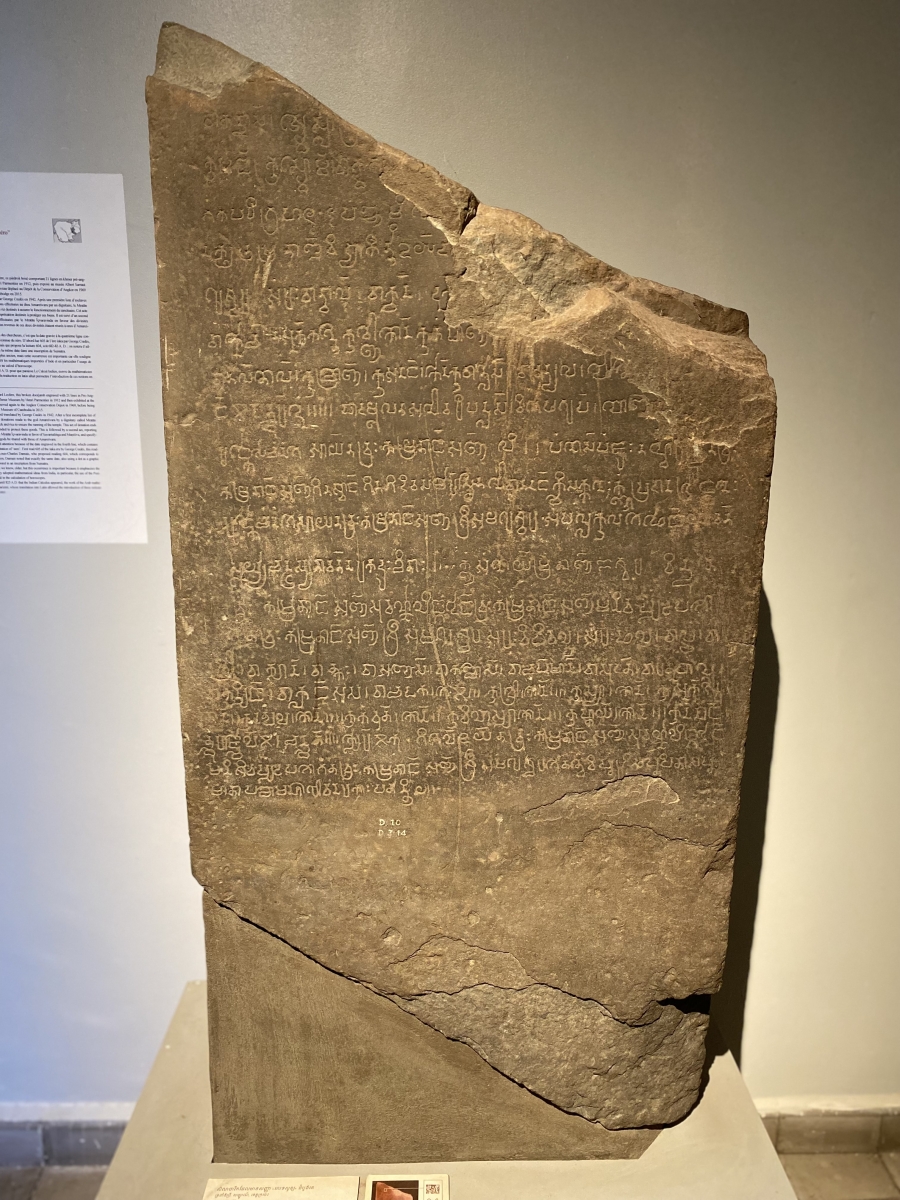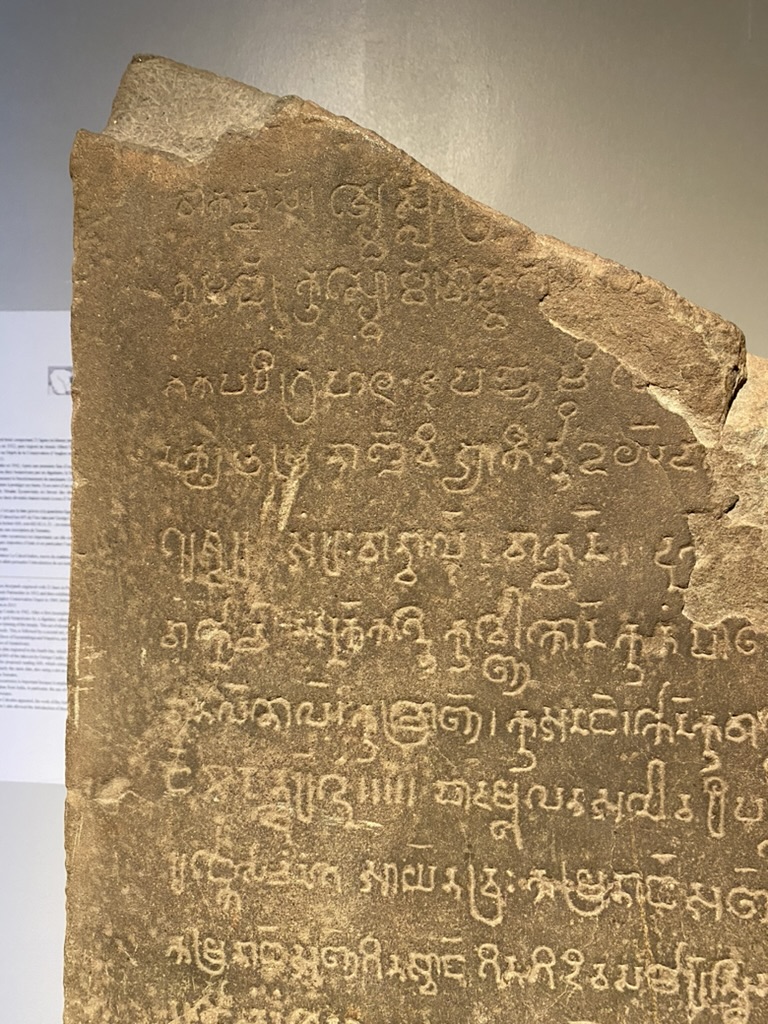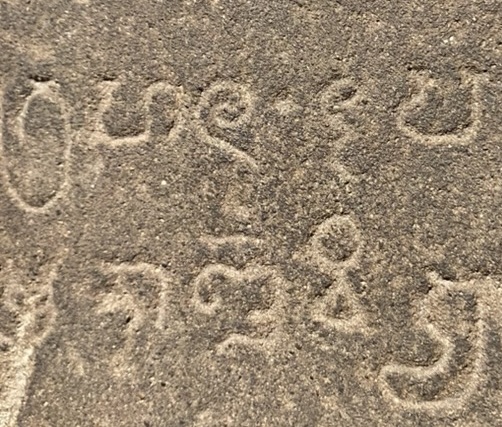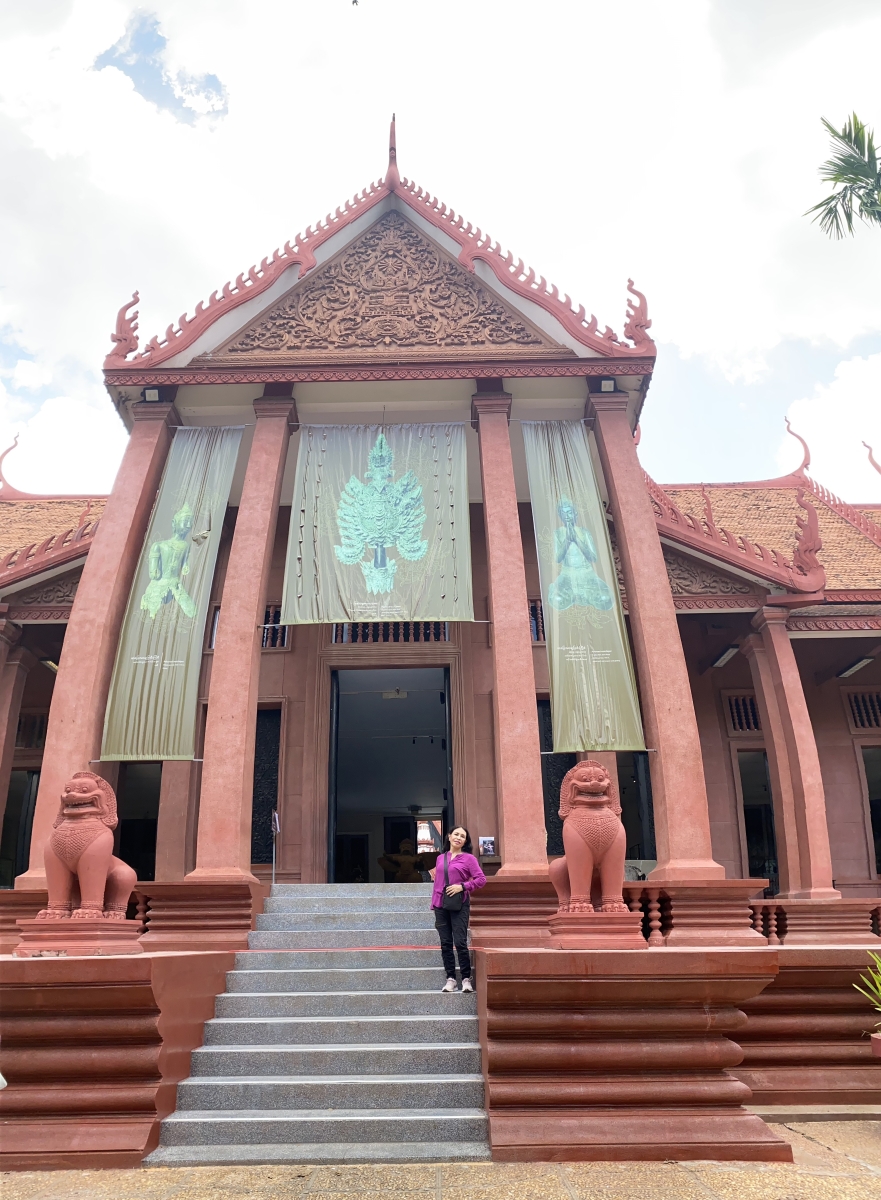- About MAA
- Membership
- MAA Publications
- Periodicals
- Blogs
- MAA Book Series
- MAA Press (an imprint of the AMS)
- MAA Notes
- MAA Reviews
- Mathematical Communication
- Information for Libraries
- Author Resources
- Advertise with MAA
- Meetings
- Competitions
- Programs
- Communities
- MAA Sections
- SIGMAA
- MAA Connect
- Students
- MAA Awards
- Awards Booklets
- Writing Awards
- Teaching Awards
- Service Awards
- Research Awards
- Lecture Awards
- Putnam Competition Individual and Team Winners
- D. E. Shaw Group AMC 8 Awards & Certificates
- Maryam Mirzakhani AMC 10 A Awards & Certificates
- Two Sigma AMC 10 B Awards & Certificates
- Jane Street AMC 12 A Awards & Certificates
- Akamai AMC 12 B Awards & Certificates
- High School Teachers
- News
You are here
Mathematical Treasure: The Cambodian Zero
The popular numbering system used in most of the world today is based on the “Hindu-Arabic numerals,” now often called the “Indo-Arabic numerals.” This system of symbols originated in the central Indian city of Gwalior and has been dated back to the year 876 CE. One of the outstanding mathematical features of this system was the introduction of the symbol “0” as a placeholder within a string of digits. The Hindu name for this symbol was sunya, meaning void. In Arabic, the word for void was sifr, which, in Medieval Latin, became zephirum. By the late Middle Ages zephirum had been shortened in Italian and French to zero, the word we recognize and use today in English. (The Arabic sifr is also the root for the English word cipher.)
But for years the story circulated that the Gwalior zero was not the first zero placeholder; that a predecessor existed in Cambodia. Further details were lacking and the status of the “first” zero remained a mystery. In a dogged research project lasting over four years, Amir Aczel (1950–2015) located and documented the existence of this zero, a Khmer zero used in a stone inscription denoting the Khmer year 604 (682–683 CE). The chronological inscription is contained on a stone stele first discovered in 1891 and designated in archaeological coding as K-127. Aczel and his wife, Debra, worked with Cambodian authorities to have the stele transferred from a storage shed to the National Museum of Cambodia.


Figure 1. Stele K-127 (left) with detail of the first several lines of text (right).
Can you spot the zero? Photographs by Ximena Catepillán.

Figure 2. The Khmer symbols above denote the year 604.
The image above is from a rubbing of the numeral 604 on the stele.

Figure 3. Can you spot the zero now? Photograph by Ximena Catepillán.
The inscription was deciphered and its numerical significance noted by the French philologist, historian, and archaeologist Georges Coedès (1886–1969) in 1931. Intervening wars and political disruptions obscured this historical find until Aczel’s search. Since he published his work in 2015, archaeologists, historians, and mathematicians have continued to study the number symbols in this inscription and others found in southeast Asia. In 2022, Frank Swetz and Shaharir bin Mohamad Zain published a reflection on various candidates for the first abstract concept of zero in Scientific American Online. For other early zero symbols represented in Mathematical Treasures, see Indonesian Zeros and Indian Zeros.




Figure 4. The exterior of the National Museum of Cambodia (top left). Stele K-127 in context with the museum’s other exhibits (top right). The identification label for the stele (above left). Museum staffer Linada Sun and Ximena Catepillán give a sense of the stele’s height (above right).
References
For further information on this zero and the search that located it, see:
Aczel, Amir. 2015. Finding Zero: A Mathematician’s Odyssey to Uncover the Origins of Numbers. New York: Palgrave Macmillan.
For information about Georges Coedès, see:
Coedès Collection, National Library of Australia, Canberra.
Acknowledgments
Amir and Debra Aczel supplied the images of the Khmer zero that originally appeared with this article, and their assistance with the original text is deeply appreciated. In January 2024, this Mathematical Treasure was updated with photographs taken by Ximena Catepillán (Millersville University) and dating corrections supplied by Iwan Pranoto (Institut Teknologi Bandung, Indonesia). The images above may be used in your classroom; for all other uses, contact Dr. Catepillán.
Frank J. Swetz (The Pennsylvania State University), "Mathematical Treasure: The Cambodian Zero," Convergence (October 2015), DOI:10.4169/Convergence20151010




